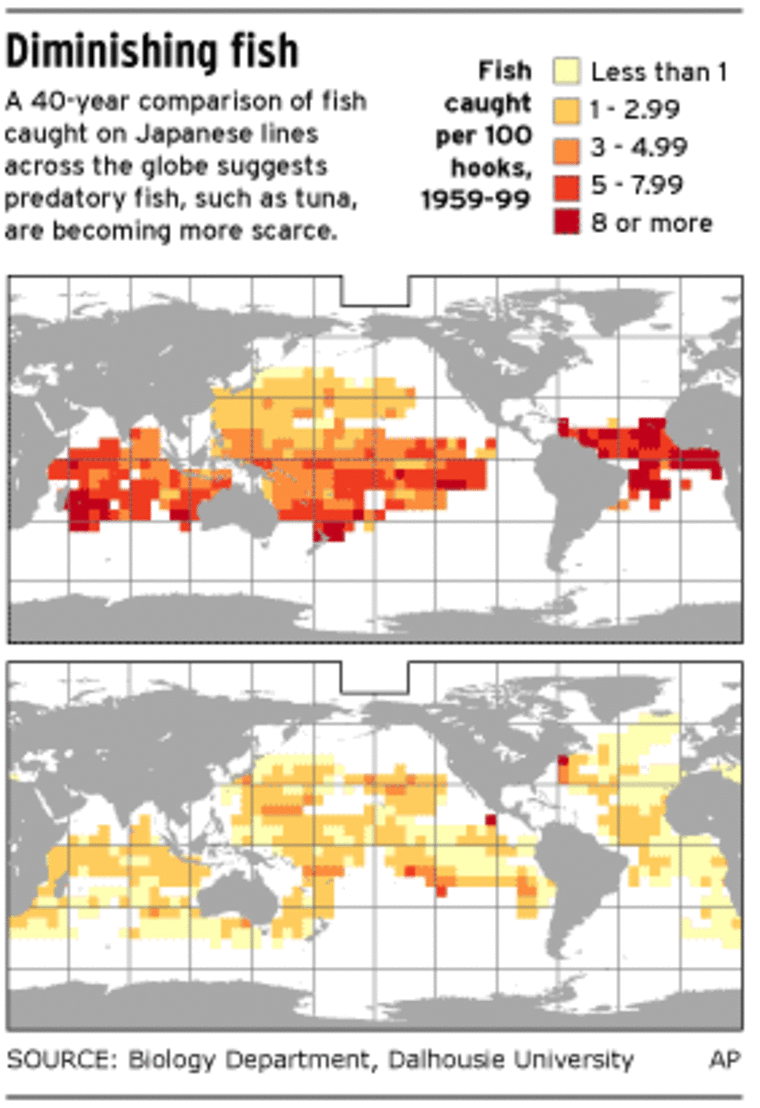Marine scientists reported Tuesday that they have discovered 106 new species of fish and hundreds more new species of plants and other animals in the past year, raising the number of life-forms found in the world’s oceans to about 230,000.
Discoveries include a gold-speckled and red-striped goby fish, found in Guam’s waters, that somehow lives in partnership with a snapping shrimp at its tail. While the goby stands sentinel, the shrimps digs a burrow that both use for shelter.
Another surprise for biologists was a colony of rhodoliths, a coral-like marine algae, found in Prince William Sound in Alaska. The hard, red plants, which resemble toy jacks, roll like tumbleweeds in the beds used as nurseries by shrimp and scallops.
Those in charge of the Census of Marine Life, now four years into a planned 10-year count, say the rate of discovery shows no sign of slowing, even in European and other waters heavily studied in the past. Some 1,000 scientists in 70 countries are now participating, up from 300 scientists in 53 countries just a year earlier.
“In general, the smaller the animals are in the ocean, the more poorly known they are,” said J. Frederick Grassle, chairman of the project’s scientific steering committee and director of Rutgers University’s Institute of Marine & Coastal Sciences.
Two million species expected
This is the second consecutive year in which scientists have reported findings since the project began in May 2000. The part of the census dealing with microbes, the smallest organisms, is just starting.
Once that part is done, scientists believe they will find that the oceans extending across 70 percent of the earth’s surface hold 20,000 species of fish and up to 1.98 million species of animals and plants, many of them small, basic life-forms like worms and jellyfish.
Studying the genomes, or genetic codes, of the species will “lead to the past history, the past evolution of life in the oceans, which goes back way before the fossil record three-and-a-half billion years,” Grassle said.
So far, scientists have described 15,482 marine fish species. The number of animals and plants is up to about 214,500, several hundred more than last year, but scientists say they do not have an exact number for that.
That is because the scientists trying to share data worldwide are “also discovering redundancy in the records of what exists,” said Ronald O’Dor, a marine biologist at Dalhousie University in Canada and the project’s chief scientist. “Until you bring all the data together into one place, you don’t realize that two different people in two different countries have given different names to the same thing.”
So far, about $125 million has been spent on the census. Its price tag eventually is expected to reach $1 billion, most of it from participating governments.
Overfishing, warming fears
The census will aid understanding of the oceans, the least-known part of the planet’s surface, and help in monitoring threats including overfishing and global warming. The idea grew from scientists’ concerns that human population growth might permanently alter the oceans’ diverse life-forms, as the National Academy of Sciences reported in 1995.

O'Dor is impressed with the rate of discovery — more than two new species of fish a week in 2004.
“We’re finding new marine species almost everywhere,” he said.
Other finds in 2004 included two types of octopus in chilly waters off Antarctica and a burrowing eight-inch worm, dubbed a “purple orchid,” in the depths of the mid-Atlantic.
“Below 3,000 meters (yards) there is a 50-50 chance that any species we find is new to science,” O’Dor said.
Long migrations found
Some of the 2004 surprises were in the growing understanding of vast distances traveled by creatures from seals to fish tracked by tiny electronic tags. “It seems that these huge migrations are much more common than we believed,” O’Dor said.
“Bluefin tuna tagged in California turned up off Japan and then swim back to California,” O’Dor said. “It’s been known that tuna swim across the Atlantic but the Pacific is three times broader.”
“And green turtles tagged near the equator go in huge loops around the Pacific, maybe three times in a lifetime of almost perpetual movement,” he said.
And off western Canada, rare green sturgeon were also found 620 miles north of their normal spawning grounds in California.
“Some people have suggested that perhaps they were moving north because of (global) warming, but we don’t know,” he said, adding large fish probably take several weeks to swim across the Pacific.
Seamounts of interest
Another challenge will be to map sub-sea mountains. About 14,000 of these so-called seamounts have been discovered but only 250 studied.
“They are like islands — they have species found nowhere else,” said Grassle.
He said some oil companies were cooperating in handing over seismic data of the seabed to further the research. Seamounts and deep ridges are thought to possibly affect ocean circulation and thus the distribution of marine life.